


The service paints many vivid pictures of what happens on the Christian way.

If you are engaged to be married and looking for a church to be married in, then congratulations! A wedding is one of life's great moments, a time of solemn commitment as well as good wishes, feasting and joy.

If someone you know and love has died, a funeral led by a Church of England minister can be held in church, in a churchyard, by a graveside, or at a crematorium. The minister will be there to support you every step of the way.






.jpg)
St Andrew, Bugthorpe in the snow
The name of the village has long been a matter for conjecture and debate. Rev. Appleford pointed out that in the Doomsday Book the village was referred to as Buche-torp, suggesting that it might have been a settlement of learning, perhaps home to a community of monks. He suggested that the original Saxon name might have been corrupted to Buge-torp by Normans unable to pronounce the Saxon ‘ch’. He explained that Viscount Halifax, the Lord of the Manor, was simply insisting on a return to the ancient spelling in wanting the village to be known as Buckthorpe. Rev. Appleford, however, was writing in the Victorian period when several village names were altered to sound less uncouth. The more likely origin of the name Bugthorpe is ‘Bugge-torp’ – the farm or settlement of a man named Bug or Bugge.
If there is some conjecture as to whether traces of a Saxon church are to be found at the base of the tower, what is undisputably Norman is the font which is large enough for the complete immersion of a child at baptism. It is decorated with nail heads which are reminders of the crucifixion.
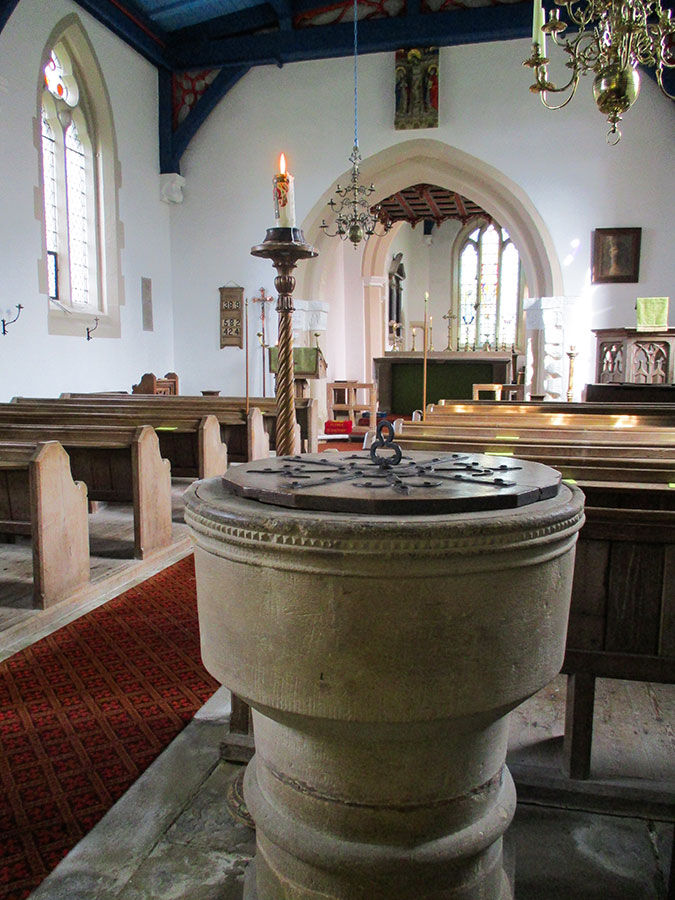
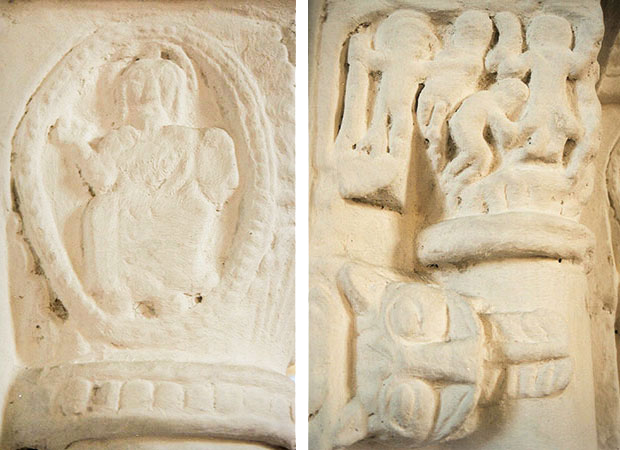
Romanesque carvings on the south side of the chancel arch.
The Norman nave of Bugthorpe Church was pulled down and re-built in 1859. A topographical guide from a few years prior to that described the church as being in a bad state of repair.
The chancel arch, which is in Early English style, retains the capitals of an earlier period decorated with some fascinating carvings. Some of these are easier to identify and attribute than others. On the western face of the north side is Christ in Majesty with his hand raised in blessing and holding his Gospel in the form of a book. There is also a carving of St. Peter holding the Keys of Heaven given to him by Christ in one hand and a book in the other. There is a scene duplicated on both the north and south sides of the chancel arch which has been variously interpreted as the expulsion of Adam and Eve from the Garden of Eden or the Raising of Lazarus by Jesus. There is also a possible sheela na gig – a naked woman with exaggerated genitalia – which has sometimes been interpreted as a warning against lust. Layers of whitewash, possibly applied to obscure more graphic physical detail, make precise identification of the sheela na gig very difficult. In the carvings are many representations of foliage as well as animal and abstract shapes, all very typical of Romanesque art.
The present choir is what would have been the chancel in the Norman church. In the late twelfth or early thirteenth century the original east wall of the church was demolished, and a new chancel built with a Lady Chapel on the north side. This chancel has its own arch. Rev. Appleford suggests that the original intention was probably to demolish the whole church west of the new chancel arch and to re-build it on a much grander scale. Plans of the church prior to the re-building of the nave in 1859 give some idea of how ambitious the medieval re-building plans might have been. In the event this project was not carried out.
There are many interesting features in the chancel. On the south side of the chancel are three sedilia. Rev. Appleford suggests that the presence of three sedilia in a comparatively small country church – one each for the priest, deacon and sub-deacon at the celebration of a Solemn Eucharist – gives weight to the belief that a small colony of monks once lived in cells on the north of the church and served within it. There is also a medieval piscina in the chancel. This is used for the washing of sacred vessels used in Holy Communion.
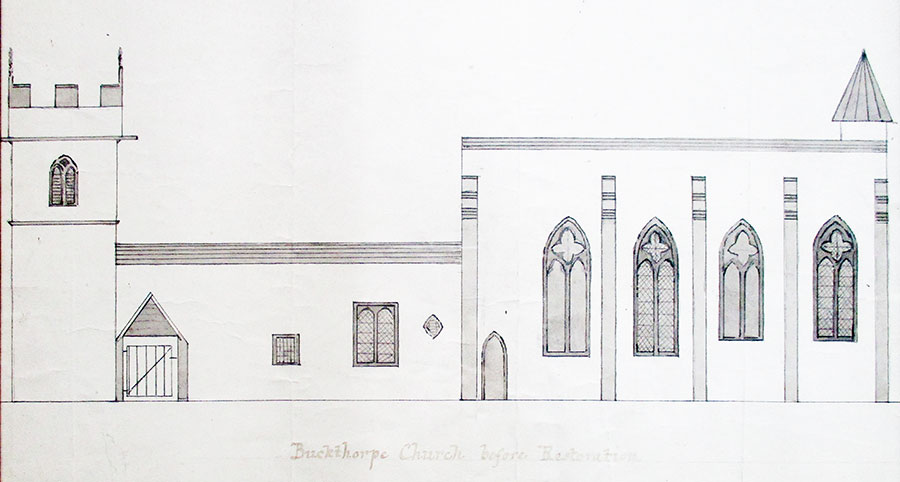
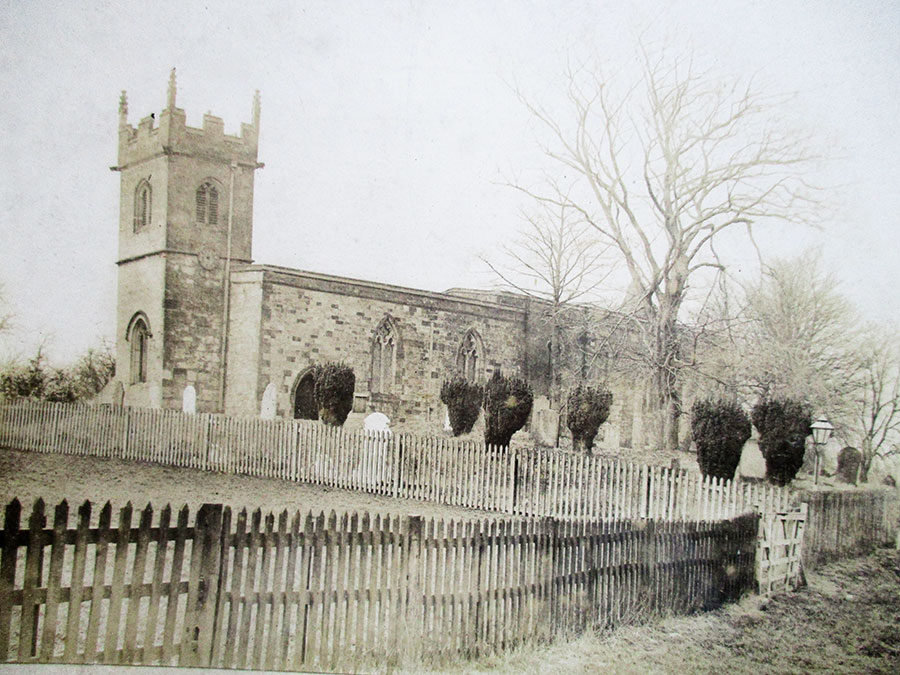
As the plan of Bugthorpe Church prior to restoration shows, the re-built nave of 1859 is higher than the original Norman nave but still lower than the chancel.
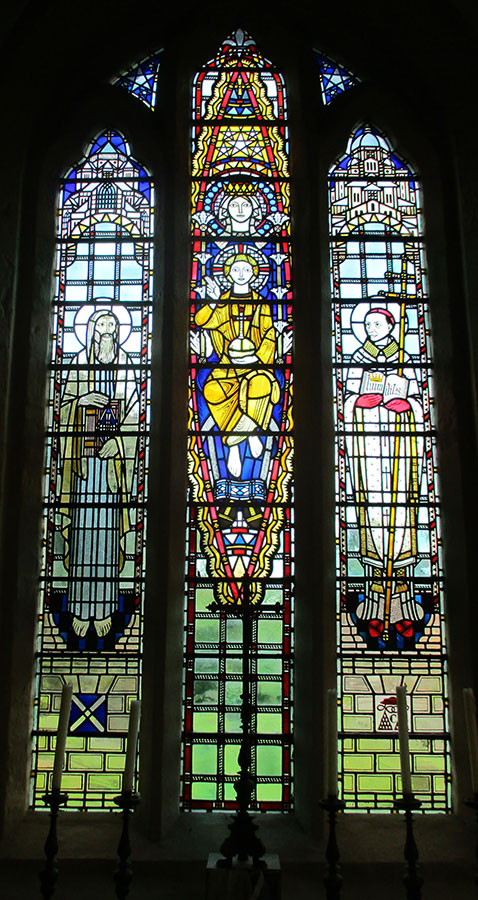
The East Window in Bugthorpe Church
The East Window contains glass by Edward Moore. It depicts Our Lady with the Christ Child in a mandorla. From the Italian word for ‘almond’, a mandorla is an aureole or lozenge of light surrounding a holy person. To the left is St. Andrew while on the right is St. Charles Borromeo, the sixteenth-century reforming Bishop of Milan. The patron saint of the Second Viscount Halifax, he is shown with his emblem, the Latin word humilitas.
On the north side of the chancel is the Lady Chapel which was destroyed in the eighteenth-century - the stones had been used to build a bridge over a beck on the road to Malton - and re-built in 1905 due to the efforts of Rev. Appleford. The first celebration of Holy Communion in the restored and re-built Lady Chapel was on 5th October, 1905.
A memorial to Mary Paylor had been erected against the blocked up arch of the old Lady Chapel and this had to be re-located. This is now to be found against the west wall of the Lady Chapel. It bears the following inscription:
In Memory of MARY PAYLER
Grand-daughter and sole heiress of the late
Sir Watkinson Payler,
Of Thorolby Hall, in this County,
Baronet,
Whose excellent good qualities,
Charitable disposition,
And extreme benevolence,
Rendered her most amiable when living,
And her death universally regreted.
She departed this life
the xxi. day of Decr., MDCCLVI,
in the L.X. year of her age.
Sic itur ad astra.
In the chancel are other memorials to Sir Edward Payler and William Watkinson who married Jane Payler, daughter of Edward.
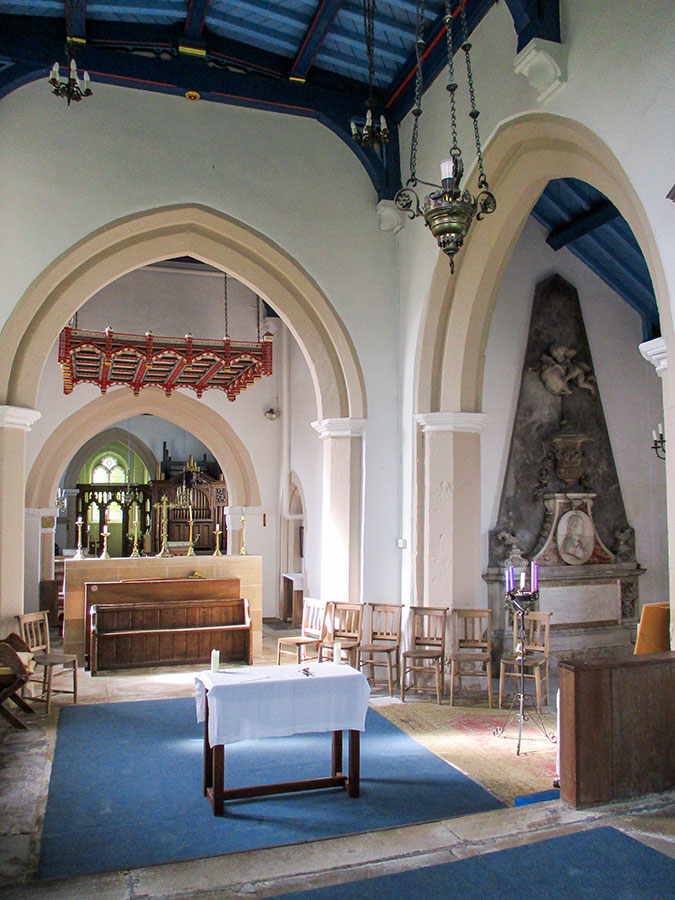
The chancel of Bugthorpe Church with the Lady Chapel to the right.
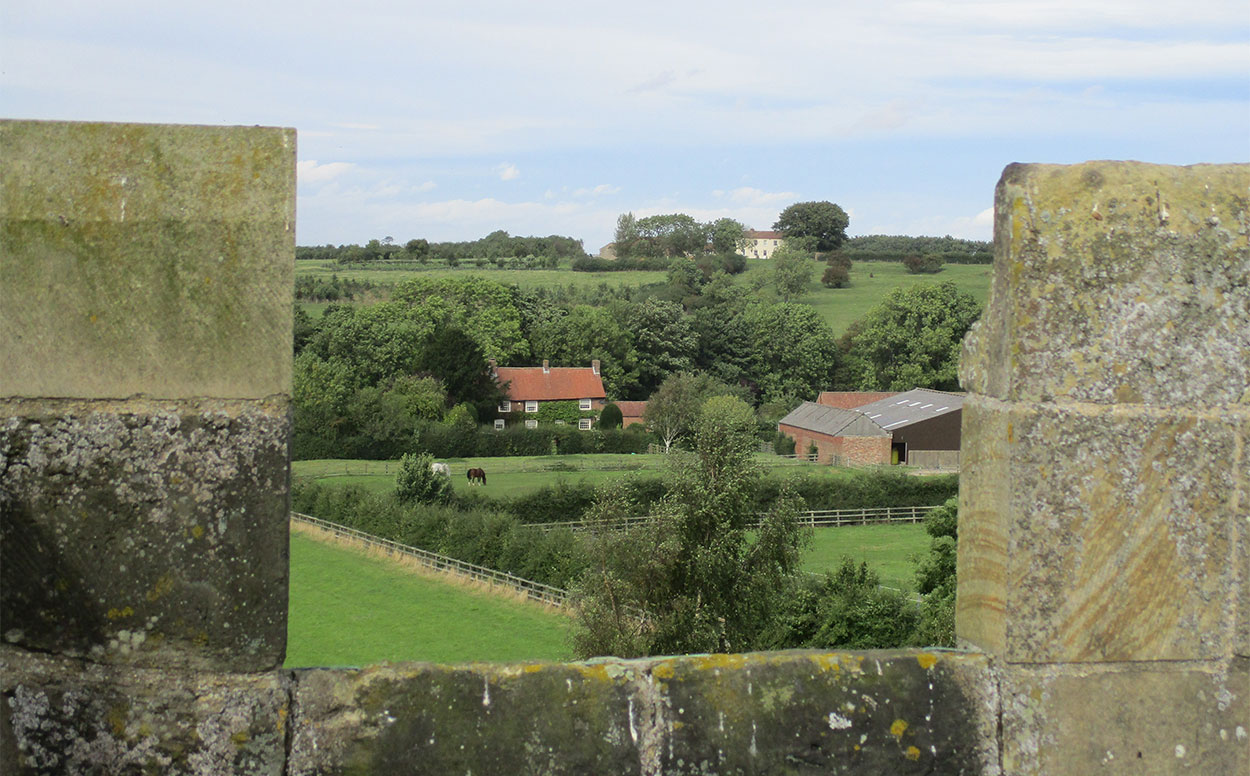
Thoralby Hall in the distance and Low Hall viewed from the top of Bugthorpe Church tower. Local legend told of an underground passage from Thoralby Hall to the church.
In front of the High Altar in the chancel are other gravestones. Some of these are to members of the Ruston family who also lived at Thoralby Hall. In addition there is a gravestone with an incised floriated cross running the whole of its length. This is believed to mark the burial place of William Halomshire, vicar of Bugthorpe, who died in 1449. In the churchyard just outside the south wall of the church is a grave slab or coffin lid which probably dates from the late twelfth or early thirteenth centuries. It does not bear any inscription.
Continuing along the outside of the church, there are some very expressive medieval gargoyles above the buttresses along the south wall of the chancel.
.jpg)
Two of the medieval gargoyles on the south side of Bugthorpe Church.

Detail from the High Altar.
Returning to the interior of the church, other interesting features include the High Altar of oak and gilt which was installed in 1927 and the central altar which, along with the tester hanging above it, dates from 1937 when Lord Halifax paid for a re-ordering of the church in memory of his father, the Second Viscount Halifax. The rood above the chancel arch depicts the Virgin Mary and St. John at the Crucifixion. This is by Esmond Burton. Overseeing the interior design was the well-known architect, Goodhart-Rendell.
The church has undergone more recent restoration in the twenty-first century with the re-building of the nave roof and extensive stone repairs carried out by Andrew Boyce of Ferrey and Mennim. The church was re-plastered and painted by William Bonney of York.
Bugthorpe Church has three bells, the second and old tenor bell having been given by Mary Paylor. The treble bell is pre-reformation and bears the inscription ‘Chrystus, itur, vita, veretas’: ‘Christ the way, the life, the truth.’
The clock, which belongs to the parish and not to the church, is by Potts of Leeds and was installed in 1891.
All photographs ©Ruth Beckett.
All text ©Ruth Beckett. Incorporating information from Rev. J. W. Appleford, A Brief Account of the Parish and Church of S. Andrew, Buckthorpe, 1886, and notes on the church prepared by Rev. James Finnemore, 2006.